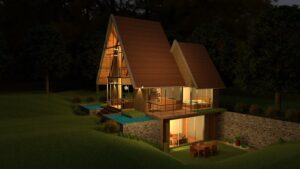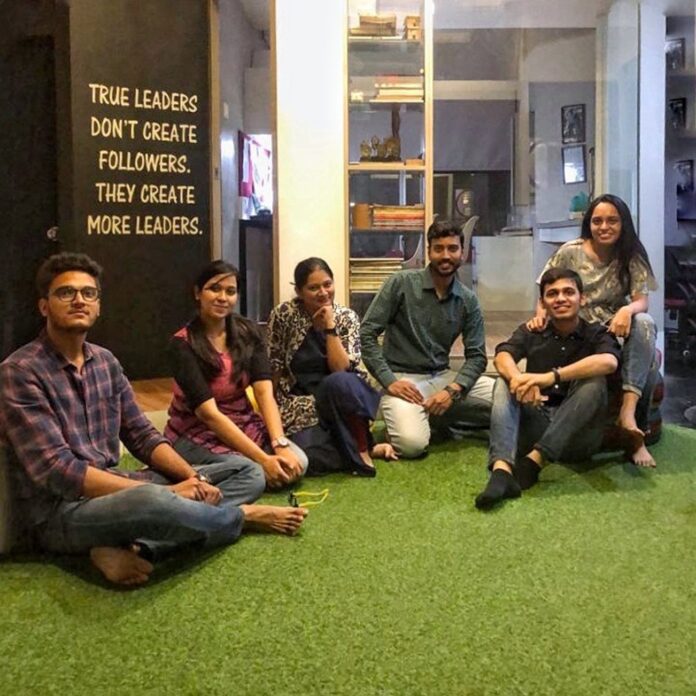Steel can be used to create beautiful structures as it can be moulded in almost any desired shape and has amazing strength, in the next few years there will be numerous free-flowing and tensile structures that will merge with nature and replace the current boxes and frames, says, AR. SUDIKSHA PAREKH, PRINCIPAL ARCHITECT, IMPRINTS ARCHITECTS
Q. What are the major advantages of using steel vis-à-vis conventional materials?
A. Steel is a material that cuts down on the time of construction as compared to other materials. It is also compatible to give shape to create designs as well as saves on cost. Clients today expect good designs with fast construction. Steel challenges the conventional construction methods and is capable to accommodate the client briefs and demands easily.
Q. How structural steel can be innovatively used in construction to provide design aesthetics and at the same time offer an economical solution?
A. Structural Steel is widely used to construct industrial sheds. Such projects are fast to construct and less expensive. Similarly, if structural steel is used in non-industrial structures and buildings then the innovative designs can be easily fabricated in steel and be cost-effective for the client. The client can use the saved amount to add other sustainable features like solar panels.
Q. What is your take on the variety of sections/grades provided by our steel producers for various demands of creativity?
A. Steel provides the flexibility to achieve larger spans and greater heights in buildings with the use of lightweight and minimal structures. Steel members in the form of channels and box sections can be merged with the external cladding materials as well as with the window frames. When designed in detail, the roof members can be used as a structure to manage solar panels instead of separate and individual structures for different elements.
Steel should not be looked at as just members of columns and beams. It should be also seen as lines that can be arranged any way desired, whether vertical, horizontal, diagonal, or curved. Steel can be used to create beautiful structures that are cheaper and less time consuming as compared to other materials like wood, stone, or concrete.
Q. What trend are we going to witness in the next 5-7 years, as far as designing structures with steel is concerned?
A. Since steel can be moulded in almost any desired shape and has amazing strength, in the next few years there will be numerous free-flowing and tensile structures that will merge with nature and replace the current boxes and frames.
Q. What should be the strategy of the industry in promoting structural steel construction in India?
A. To promote structural steel construction in our country, architects should share their work so that others can draw inspiration from them. Talk shows and other such events should be conducted regularly so that steel suppliers can get in touch with smaller architectural firms as well. This will enhance not only the awareness and emphasize on the easy availability of steel but make the creation of uniquely designed structures possible.
Steel should be easily available in the market like cement. Welders and fabricators should be trained by structural steel manufacturing companies. This will bridge the gap between architecture and steel- which should be the main strategy of the industry. Steel makes way for larger spans, lighter structures and enables faster construction but the real-life challenge is sourcing steel in smaller quantities, getting a good contractor for its execution and good structural designers who can turn the design into reality. Once these issues are answered, frequent use of structural steel will be possible. Steel is cost-effective, visually beautiful and can be easily moulded into larger yet lighter structures.
Q. Which are the iconic steel-specific projects executed by you?
A. Sitting on the hills of Khandala, the project is a second weekend home for the family of Vishal and Reena Vora. They wanted to be at one with nature and take a break from the hectic Mumbai life there. The idea was to provide them with an aesthetically appealing, climatically sound, cost-effective, and simple to execute dwelling. The scenic beauty of Khandala has been given maximum exposure by creating a glass box enveloped in steel. Since the soil of the location is rocky and the terrain sloping, it would increase machine and labour costs.
Steel was chosen so that blasting of rocks to lay a deep foundation could be negated and instead be easily installed on the natural slopes and create a lightweight structure that fell within the guidelines of the government bylaws. The sloping roof is an iconic element and will protect the house from rain instead of a concrete flat roof. This also gave way to a free, large, and unobstructed internal plan. Steel made it possible to build a visually light structure that not only enhanced the spatial effect but also cut down the cost which gave the luxury to install water bodies in the garden which will be fed through rainwater harvesting.







